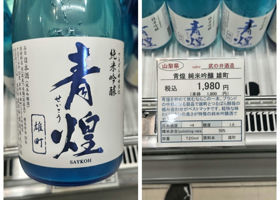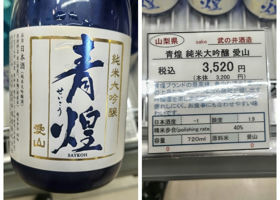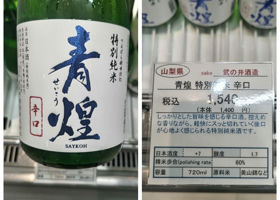



ねむち
Kyoto Takashimaya Sake Festival (6)
Take-no-i, Yamanashi Prefecture, Take-no-i Sake Brewery booth of Seiryuu. I drank a limited winter Seiryu before.
◉Take-no-i Junmai Ginjo Sunflower Yeast Brewing
Take-no-i's Four Seasons series uses Take-no-i's seasonal floral yeasts. Take-no-i uses seasonal floral yeast in its Four Seasons series: Tsubaki yeast, Sakura yeast, Himawari yeast, and Cosmos yeast.
The sunflower yeast is a strong, mellow type that we prefer. I drank the Sakura yeast at Matsuo Taisha Shrine.
◉Seikou Junmai Ginjo Omachi
A refreshing Omachi. The crisp acidity from the Tsurubara yeast keeps the umami from expanding into a fuller flavor, which is typical of Omachi.
◉Seikou Junmai Daiginjo Aizan
It is clean, minerally, and acidic. The sweetness that only Aizan can produce and the acidity of the Tsurubara yeast give it a refreshing sweetness.
◉Seikou Special Junmai Dry
It is clean, but with more koji to add umami. Dry with little sweetness.
Seikou is a clear and refreshing sake made with Tsurubara yeast and a different class of rice. Tsurubara yeast seems to be a yeast that produces a strong acidity.
Take-no-i brand sake is made year-round with Junmai and Jungin made with Kyokai No. 7 yeast, and other experimental and playful seasonal brands are also available.
In Osaka, Okuhiroya and Kobayashi Shoten carry this brand.
SAKE HUNDRED is also available, but I guess they brew on consignment.
Japanese>English